I’ve decided I should review some of the collection of compact camera and rangefinder accessories I seem to have been collecting recently. I was trying to decide where to start, and settled on the idea of starting at the beginning; starting with the accessory I have had the longest: the Voigtlander VC Meter II shoe mountable mini light meter.
If memory serves, I bought this meter to go with my Voigltander Vito b around 8-9 years ago. I have actually reviewed it before, and whilst I do have more to say on the subject now than I did then, the photos in that post at least show it on the Vito b. In more recent times I have found myself using it more on the likes of the Leica iiia, M4-P, Contax iia and even more recently on the M3. Thanks to its moveable foot (is that the right word for the bit that slots in to a shoe … bracket maybe?) it feels perfectly at home on all of my rangefinder cameras. In fact, I can’t think of a camera it hasn’t fit on to, which is testament I suppose to its versatility. Not only does it fit on a lot of cameras, but it also looks right. The metal bodied design and size have obviously been considered very well as the position it mounts, it’s depth and width just seem ideal; especially for Leicas. Though I should add, all is not entirely ideal about it fitting on to the camera… At least for my moron-mind… But before I get into that, I should probably explain how it works.
Using a Voigtlander VC Meter II light meter
The Voigtlander VC Meter II is a very simple meter, very intuitive to use, and quick too. There are two dials and three LEDs for the readout. The right dial (clicked) is for selecting the shutter speed, the left (un-clicked) is for selecting the aperture and film speed. The film speed is set via the inner part of the left dial, and once set is thankfully quite hard to knock out of position.
The Voigtlander VC Meter II is activated by a push button on the back. Press and hold and the reading is continuously updated. Press and release and the reading is displayed for about 5-10 seconds. The readout will display continuously whilst the dials are being moved. Within 30 seconds the LEDs will also display the same reading simply by moving one of the dials again. After this 30 seconds the reading is lost though and a new one will need to be taken.
The dials are linked by 5 white lines. The centre being the obvious choice for taking a reading from. Though, when the green LED is lit, a reading can quite easily and quickly be read from either side of any of the 5 lines. For eg if f/2 and 1/60th are either side of the centre line; f1.4 and 125th, f1 and 250th, f2.8 and 30th and f4 and 1/15th can also be read at a glance. This is pretty useful in case – like me – your ability to do these sums quickly in your head is sometimes a bit lacking.
To find the correct exposure, first you either set the desired aperture or shutter speed, then move the opposite dial in the direction whichever illuminated red LED is pointing. So if the right underexposure LED is lit, since it is pointing to the left, you turn either dial anti-clockwise until the green LED lights up. And if the left overexposure LED is lit, since it is pointing to the right, you turn either dial clockwise until the green LED lights up. It really couldn’t be any more simple.
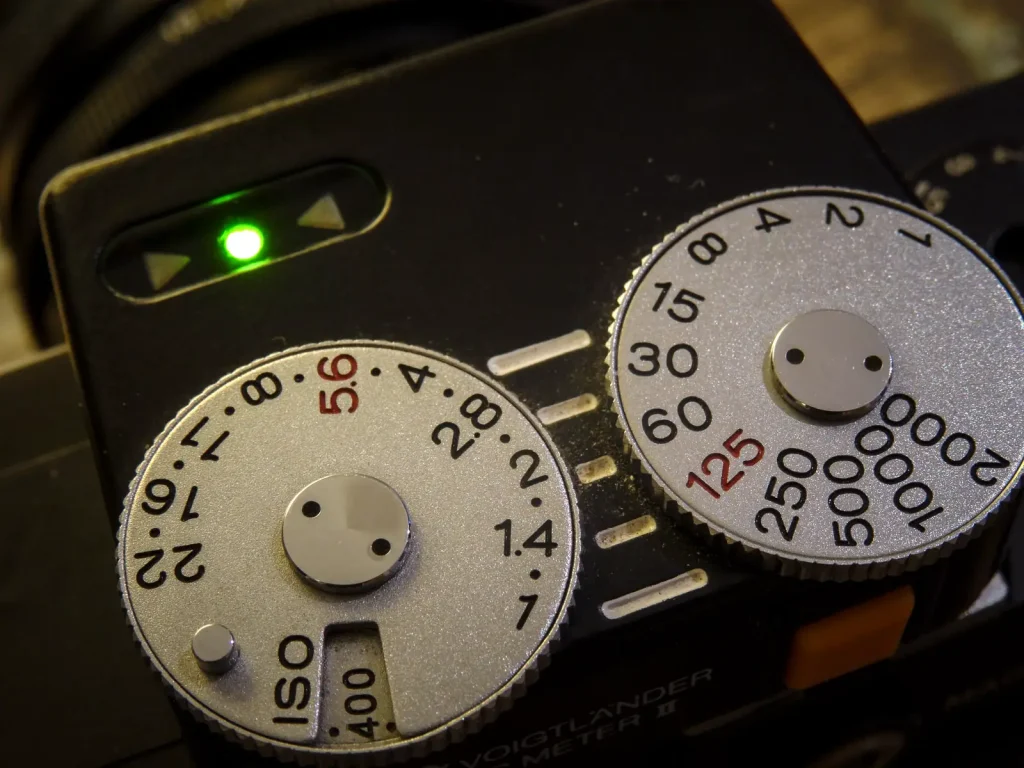
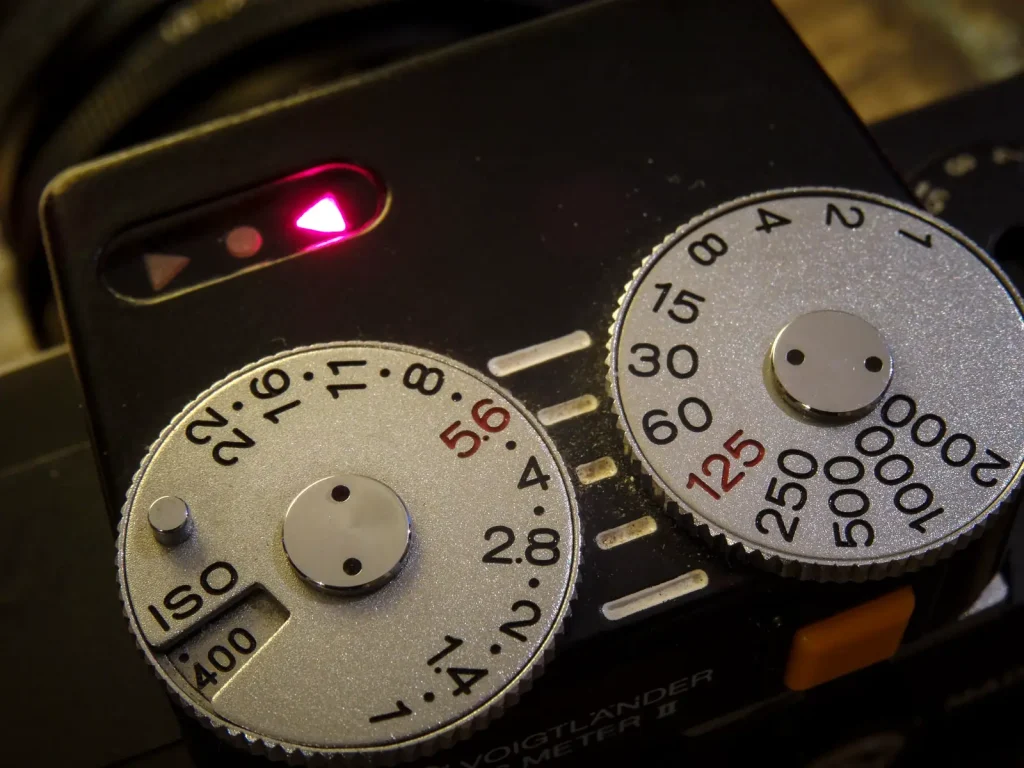
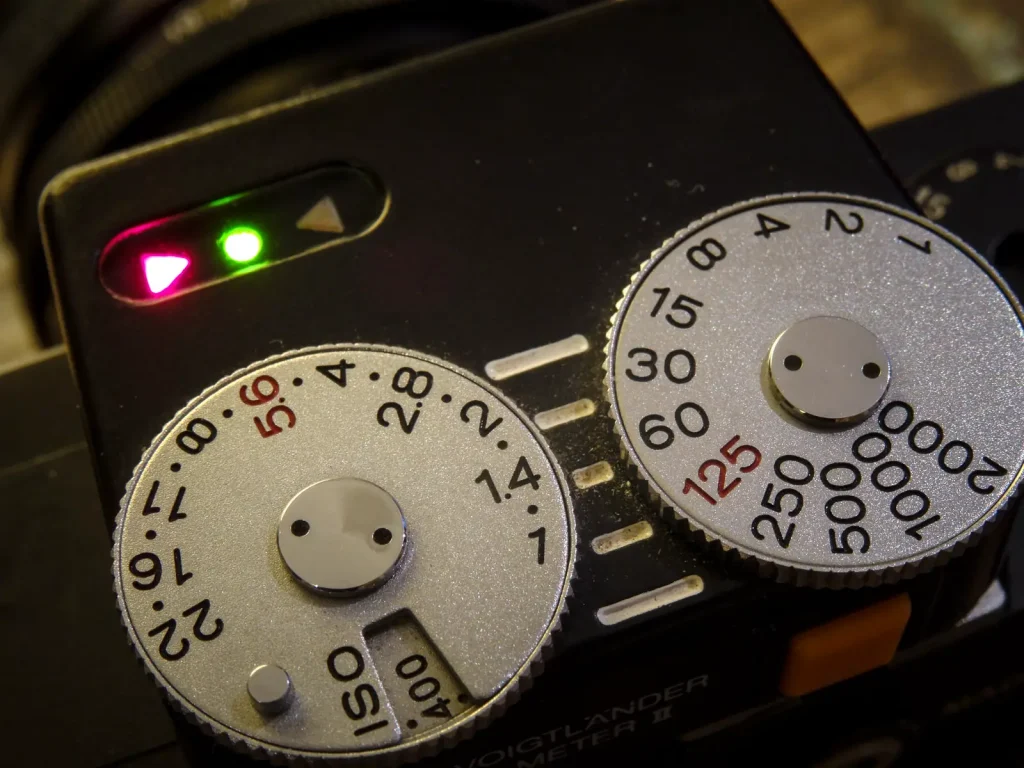
Metering Angle and behaviour
The Voigtlander VC Meter II meters about a 30 degree viewing angle. This very loosely equates to the 75mm frame lines in a Leica, which is pretty handy (if you have them) as you can use them as a rough guide for where you want to meter from. Using these 75mm lines, I find there to be about a stop difference from the centre to the edge of the lines in terms of metering sensitivity. Make what you will of this info… Most of the time, I just point it roughly in the right direction, but sometimes it’s useful to have a better idea of the behaviour of a meter.
The pros and cons of a shoe mounted finder
Let me first touch on the psychological impact of a shoe mounted finder. Some will probably think I’m barmy here, but bear with me… By attaching this meter to the camera, it feels like it’s part of the camera. Which is great… Until I treat it like it’s actually part of the camera. What I mean by this, is that on occasion, perhaps whilst lost in the concentrations of thinking about subject or composition or whatever, I will take a reading, set the aperture and shutter speed on the light meter, illuminate the green dot of ‘correct exposure/go’ … And then take the photo. Completely forgetting I needed to transfer those settings to the camera. My ears are now burning as I can almost hear you muttering “moron” at me. There must be something rooted in my brain that means the familiar experience of setting two dials that directly read shutter and aperture in this way tricks me into feeling like I don’t need to do it again in the way that I do with every other light meter I have ever used. One way or another, I suspect I’m possibly just a moron. My solution … I often carry the bloody thing in my pocket rather than leaving it mounted.
There are of course advantages to it being mounted on the camera: Less to carry, think about or loose in your pocket when you need it at a seconds notice. And more importantly, it’s also always pointing in the right direction, or thereabouts.
Other frustrations
One of the biggest annoyances of this little meter is the battery compartments ability to flap open to easily. I’ve asked numerous people about this in the past to try and find out if I’m the only one, or if it is a problem others suffer with, and the response I get is 50/50. Some claim to have no idea what I’m talking about, while others, like me have experienced batteries disappearing into the bottom of a pocket or camera bag. I’ve solved it though – as I do with so many problems in life – with a bit of blutak.
The final frustration with its function is with the point at which aperture/iso dial stops turning. With ISO set to 3200 it will only rotate to f/2. 1600 it will relate to f1.4 and 800 is will rotate to f/1. But believe it or not, in all the years I’ve owned it, I only noticed this recently when I had my M4-P loaded with HP-5 that I wanted to shoot at ei3200 and mounted my Voigtlander 50mm 1.1 lens. The meters lower range limit is also only EV1 (100iso) too, so I suppose if you are thinking of using this meter in ultra low light, there might be better options.
There is one more annoyance that comes along with buying this light meter, and that is the cost – £202 in the UK, and $225 is the US. Fortunately for me, I bought mine a while ago, for just over £100 … But even back then I thought that was a little dear for what it is.
My conclusions on the Voigtlander VC Meter II
You might be thinking I sound unsure or slightly negative about this meter? I’m not! It has its little foibles, and combined with me being a moron, it can let me down. But actually, it’s quite a brilliant little thing. Sometimes in life there is no need for all the bells and whistles, and this little light meter is definitely suited to those times. Yes there are light meters with changeable metering patterns, incident meters, flash meters, meters that function in light you can barely see to photograph in… But none of those are either as small or mount to the top of a camera and very few are so mindlessly simple to use. The purpose of the Voigtlander VC Meter II is to work as a simple light meter for simple cameras that don’t otherwise have a light meter. And quite simply, it does that very well!
Cheers for reading
Hamish
Share this post:
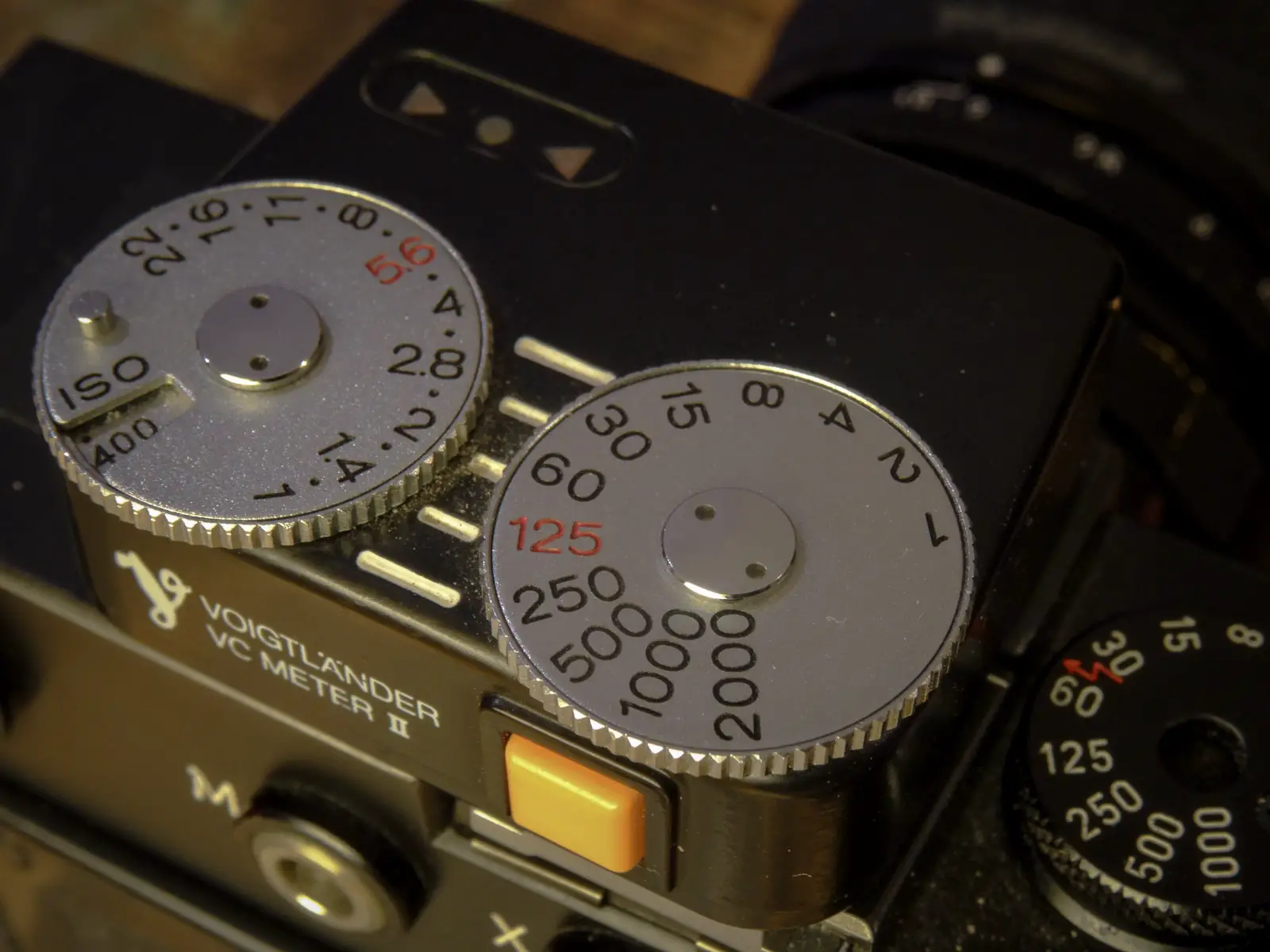
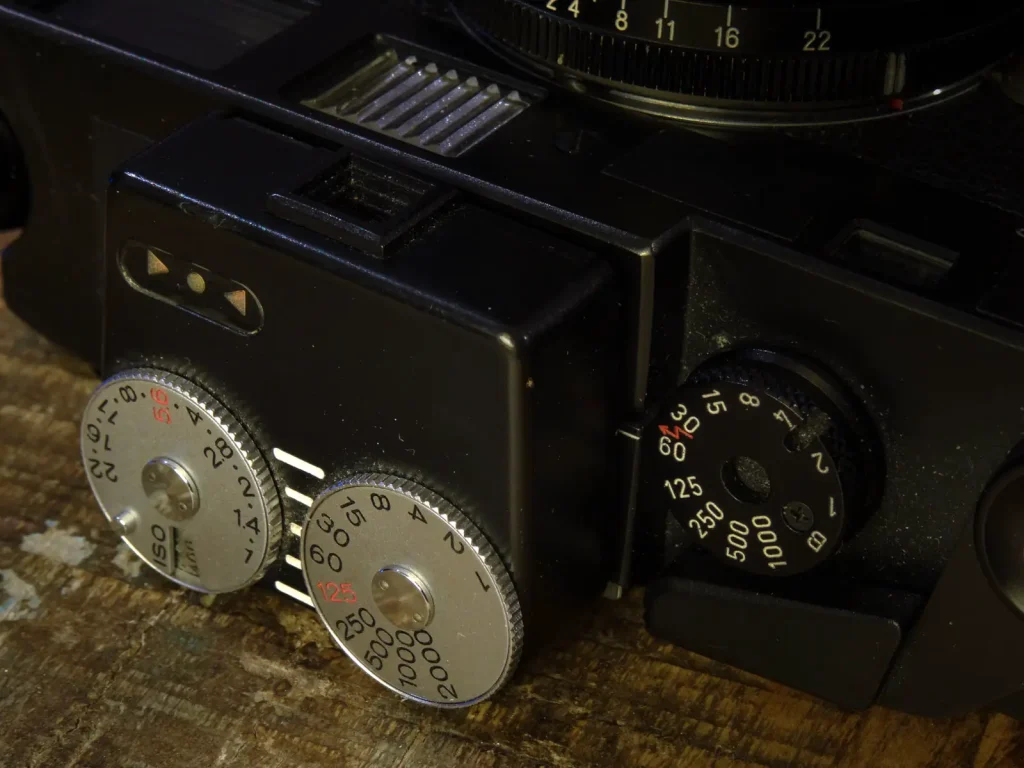


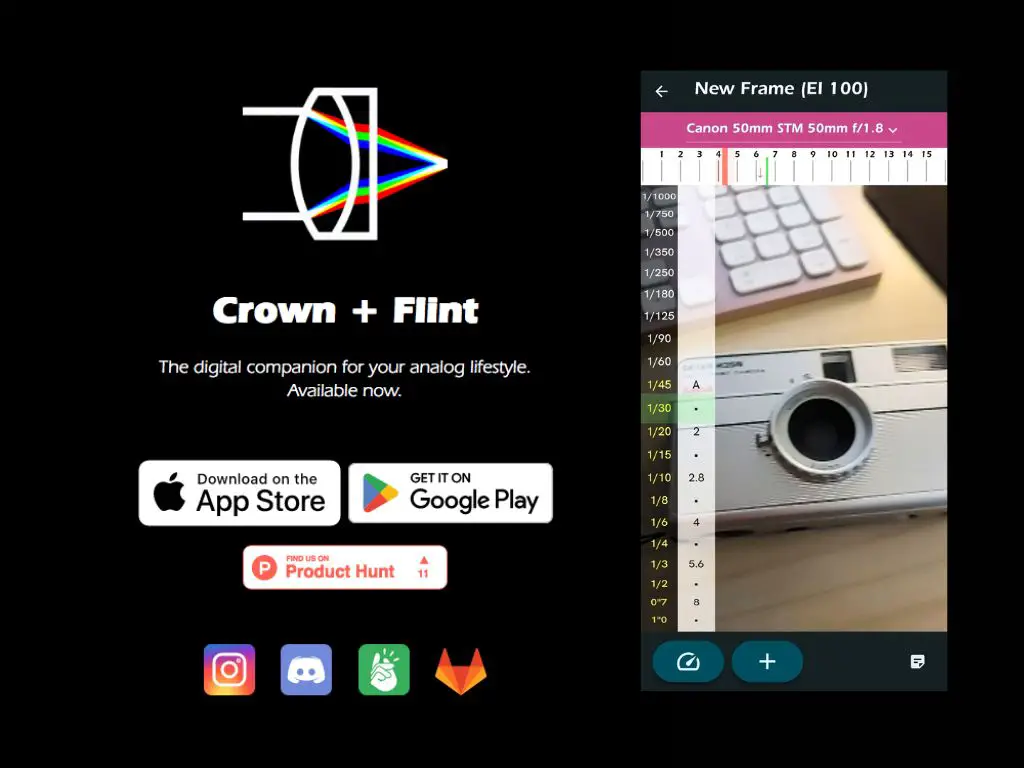
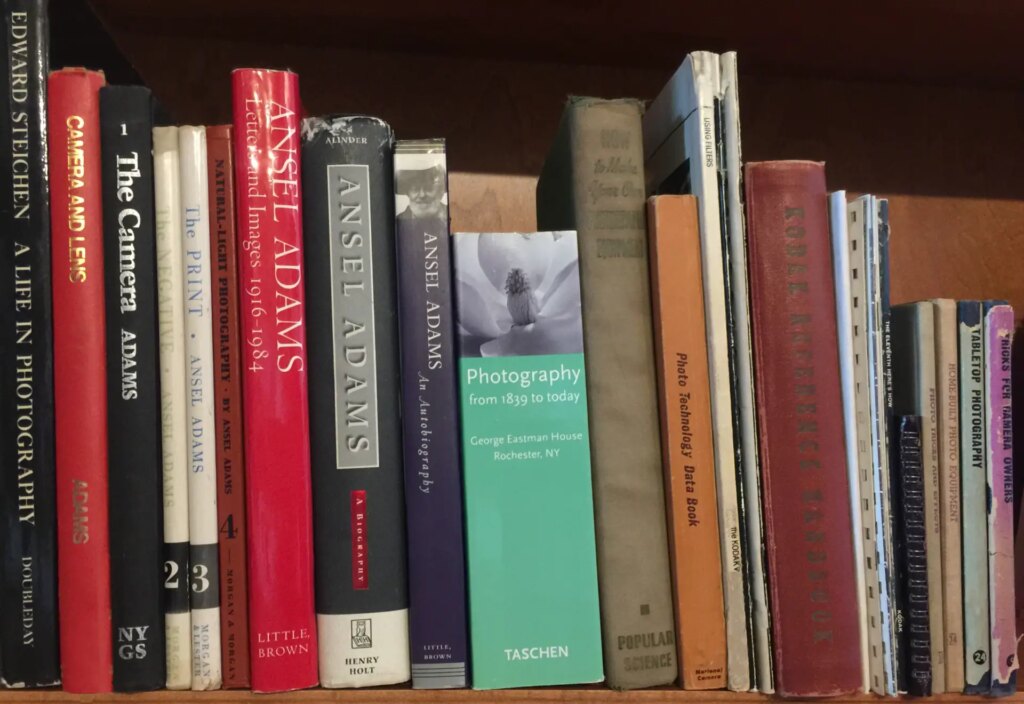




Comments
David Mantripp on Voigtlander VC Meter II Light Meter Review
Comment posted: 19/01/2015
Comment posted: 19/01/2015
jeremy north on Voigtlander VC Meter II Light Meter Review
Comment posted: 05/05/2015
Good review, however as you point out £200 is a hefty price for such a basic meter, perfect though it is for a mechanical camera.
I'll be staying with a Sekonic and put the £200 toward a lens.
Comment posted: 05/05/2015
Dan Castelli on Voigtlander VC Meter II Light Meter Review
Comment posted: 22/07/2017
I just bought one. I was happy as a pig in clover to see it fit both my M2 & the CL w/out any overhand or wobble.
I checked it against my Luna Pro Digital (my go-to meter) and the Voigtlander is about 1/4 of a stop under. I tested it in low light, stormy weather, open shade, etc. against the Luna Pro and it delivers consistant results.
Low profile, it's squarish shape fits the lines of the M2 & CL so it looks like an accessory made for the camera, not an aftermarket add on.
Only quibble: I sometimes to forget to transfer the meter setting to the camera, but I'm getting better at remembering. My trick? I set the s/speed of the camera for the light condition (walking into a room I might set the camera to 1/60 & the meter to 1/60) Then I spin the f/stop dial to get a correct reading, transfer to the lens, focus & shoot. It takes less time to do this than to read about the process.
Leicameters in good working order are as rare as hen's teeth, the Voigtlander fits the bill.
It's a good accessory; perhaps not for everyone, but I'm quite happy with it.
Comment posted: 22/07/2017
Comment posted: 22/07/2017
Steve Ember on Voigtlander VC Meter II Light Meter Review
Comment posted: 10/04/2018
I'm a new subscriber and have been enjoying your engaging and informative writing on topics near and dear.
I had to chuckle at our shared experience with that battery compartment door flapping open! It has happened to me more times than I'd care to admit, often resulting in the two button cells migrating into another dimension, never to be found again. It usually happens if the meter is being used on a camera whose shoe is a bit "looser" than others in terms of friction fit. Or it can be on a perfectly fine shoe, but if I'm carrying another camera sometimes contact between the two might cause the meter to slide off. Then, with 100% certainty, the door will fly open. So far, I've been lucky in finding the meter in the grass (before trampling on it) but once the relief of not having to reinvest the $225 passes, I'll discover that the button cells are...elsewhere!
This has caused a certain level of apprehension in taking the meter along on a shoot, so I was encouraged to read your simple and entirely logical "blutak" solution - not only for the battery compartment door, but especially as it might also come in handy in assuring a secure (but reversible) fit on top of those cameras from which the meter has been known to slip off. Wonder if you might post a photo of where on that door you apply the blutak.
Incidentally, I typically use the meter as an assurance factor on several compact rangefinders, just to confirm certain readings from a 40 year old consumer-level in-camera meter are indeed accurate. Also VERY nice to have it especially on those cameras built around the 675 mercury cell such as the Minolta 7S II. Until I decide whether to get such cameras internally modified to be accurate with 1.5 silver button cells, I've been using those WeinCell MR675 replacements; however, as these cameras are used sometimes several months apart, as often as not I'll forget about the limited life of even these zinc air contraptions and end up with a dead meter. Bravo Voigtlander for coming out with something so useful in compact form. Now, if I can just keep those batteries inside where they belong!
One more question: Do you have a favorite battery type for the Voigtlander in terms of consistent accuracy over the batteries' lifespan - i.e. silver over alkaline types?
Many thanks for this and your other informative columns!
Steve
Comment posted: 10/04/2018
Reveni Labs Light Meter: Tiny Meter For Your Old Cameras - Launches on Kickstarter - 35mmc on Voigtlander VC Meter II Light Meter Review
Comment posted: 02/03/2020
Daniel on Voigtlander VC Meter II Light Meter Review
Comment posted: 12/04/2020
Hedeco Lime One meter: First impressions - Kosmo Foto on Voigtlander VC Meter II Light Meter Review
Comment posted: 15/11/2020
TTArtisans and Doomo launch new hotshoe meters - Kosmo Foto on Voigtlander VC Meter II Light Meter Review
Comment posted: 20/10/2021
TTArtisan HOT SHOE LIGHT METER Review - Japan Camera Hunter on Voigtlander VC Meter II Light Meter Review
Comment posted: 03/03/2022
John R Flinn on Voigtlander VC Meter II Light Meter Review
Comment posted: 18/10/2022
Comment posted: 18/10/2022
HEDECO, Leica, Voigtländer, TTArtisan, KEKS: five attachable light meters on Voigtlander VC Meter II Light Meter Review
Comment posted: 21/11/2022